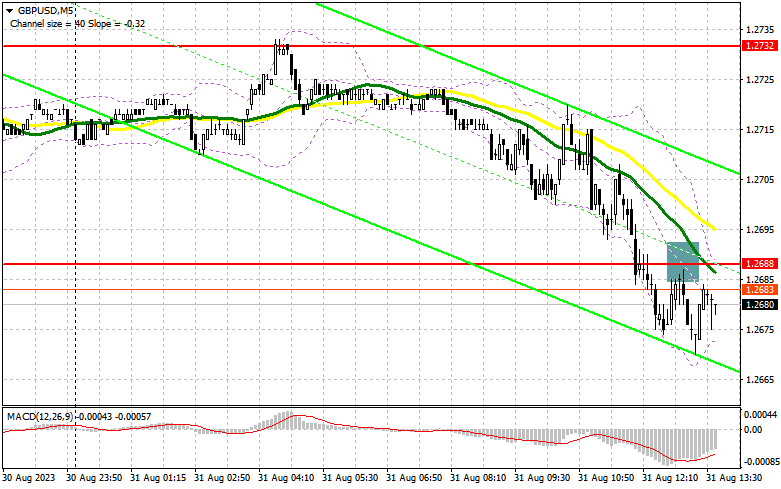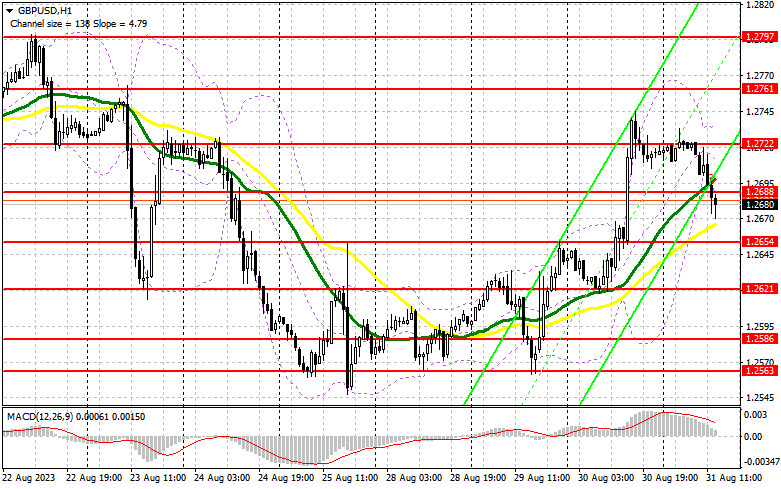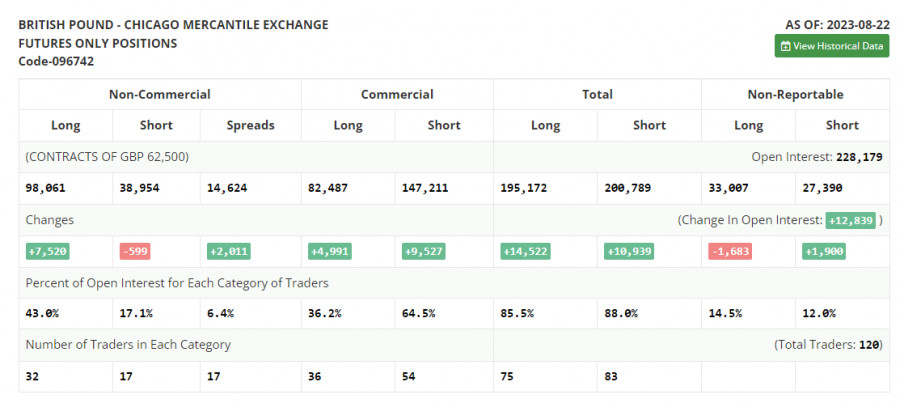
In my morning forecast, I highlighted the level of 1.2688 and recommended making market entry decisions based on it. Let's look at the 5-minute chart and understand what happened there. There was no false breakout at this level, but the break and reverse test led to an excellent sell entry point. However, a significant downward movement had yet to occur when writing this article. As long as trading remains below 1.2688, we can expect a further decline in the pair. The technical picture for the second half of the day has been revised.

To open long positions on GBP/USD:
During the American session, figures on the core personal consumption expenditure index in the US and the level of American income and expenditure are expected. If the price pressure remains and American incomes and expenses increase again, GBP/USD will likely continue its decline. Therefore, I will act only after a decrease and a false breakout around the closest support of 1.2654, formed based on yesterday's results. Only this will signal the pound's purchase, aiming for a recovery to around 1.2688, which is now being actively contested. It's important to understand that a breakthrough and top-down test of 1.2688 also form a purchase signal that will strengthen the pound and pave the way to the resistance of 1.2722. If it exceeds this range amid a sharp drop in price pressure in the US, we can discuss a surge to 1.2761, where I will fix the profit. If GBP/USD falls and there are no buyers at 1.2654, which is also possible, the pressure on the pair will only increase, leading to another sell-off around the support of 1.2621. Purchases there will be made only on a false breakout. Opening long positions on GBP/USD immediately on a rebound is possible from 1.2586, with a correction target of 30-35 points within the day.
To open short positions on GBP/USD:
Bears have made their presence known, but buyers have started acting more actively with each decline. While trading remains below 1.2688, the chances of the pound falling remain. However, the optimal scenario for opening new short positions under current conditions will be the unsuccessful consolidation above 1.2688 during the US data release. This will provide an additional entry point with a target to decrease to the support of 1.2654, where just above are the moving averages, siding with the bulls. A break and reverse test from the bottom to the top of this range will allow sales with an update of 1.2621, which would be a significant GBP/USD correction. The further target is the 1.2586 area, where I will fix the profit. If GBP/USD rises and there are no bears at 1.2688 in the second half of the day, the bulls will regain market control. In such a case, only a false breakout around the next resistance of 1.2722 will form an entry point for short positions. If there's no activity, I advise selling GBP/USD from 1.2761, expecting a pair rebound down by 30-35 points within the day.


Indicator signals:
Moving Averages:
Trading is taking place above the 30 and 50-day moving averages, indicating the development of a bullish scenario.
Note: The author considers the period and prices of the moving averages on the hourly H1 chart and differs from the general definition of classic daily moving averages on the daily D1 chart.
Bollinger Bands:
In case of a decrease, the lower boundary of the indicator, around 1.2680, will act as support.
Indicator Descriptions:
• Moving Average (determines the current trend by smoothing out volatility and noise). Period 50. Marked in yellow on the chart.
• Moving Average (determines the current trend by smoothing out volatility and noise). Period 30. Marked in green on the chart.
• MACD Indicator (Moving Average Convergence/Divergence). Fast EMA period 12. Slow EMA period 26. SMA period 9.
• Bollinger Bands. Period 20.
• Non-commercial traders - speculators, such as individual traders, hedge funds, and large institutions, who use the futures market for speculative purposes and meet certain requirements.
• Non-commercial long positions represent the total open long position of non-commercial traders.
• Non-commercial short positions represent the total open short positions of non-commercial traders.
• The total non-commercial net position is the difference between non-commercial traders' short and long positions.